A reported 71 percent of B2B buyers are now millennials and Gen Z. Two years ago, it was 64 percent.
That 7-point jump represents millions of decision-makers who trust peer recommendations more than traditional marketing, expect AI-driven personalization and mobile-native purchase experiences, and rely on social media when making purchasing decisions.
Think of it like the Blockbuster moment. While Blockbuster focused on what worked in the past, Netflix understood how people actually wanted to discover and consume content. Today’s buyers want that same experience—digital-first, peer-driven, and self-service.
The numbers prove the shift: impact.com research reveals only 2 percent of people consider traditional ads credible, while 77 percent are most likely to purchase from personal recommendations. Nearly half of all millennial lead buyers now make decisions for deals up to $100k.
Yet most B2B marketing strategies weren’t built for this reality.
To stay relevant, B2B brands must lean into rising strategies, starting with B2B social commerce.
Well-executed B2B social commerce involves a multi-layered strategy that supports the entire buyer journey from discovery to conversion. Partnership-powered commerce is a high-performing but underutilized approach. It uses affiliate, creator, and brand partnerships to build trust and drive action, making it a powerful tool for growth.
In this guide, we’ll break down the five key strategies that define B2B social commerce today—and give you a clear framework for growing revenue.
What is B2B social commerce and how can it benefit my business?
B2B social commerce is the next evolution of social media marketing. It shifts the focus from passive brand awareness to active buyer engagement—driving ROI and building stronger customer relationships along the way.
While B2C social commerce often centers on in-platform purchases, such as live shopping and shoppable posts, the B2B version is designed for longer sales cycles and more complex decision-making. It prioritizes trust, education, and lead generation—all before a buyer ever speaks with a sales rep.
B2B social commerce supports every stage of the buyer journey by helping prospects:
- Discover your brand in relevant communities and channels
- Understand how your solution addresses their specific challenges
- Take meaningful actions like requesting demos, starting free trials, or downloading gated content

Sales and prospect automation company Clay uses a LinkedIn ad with commerce features to encourage potential prospects to sign up for a product demo.
Partnerships take this strategy to the next level. When your message comes from trusted voices—creators, affiliates, or industry experts—it resonates more deeply. These partners can shape buyer perception and inspire action in a way that branded content alone often can’t.
Yet many B2B marketers still view social media marketing solely as a top-of-funnel awareness channel, missing a golden opportunity.
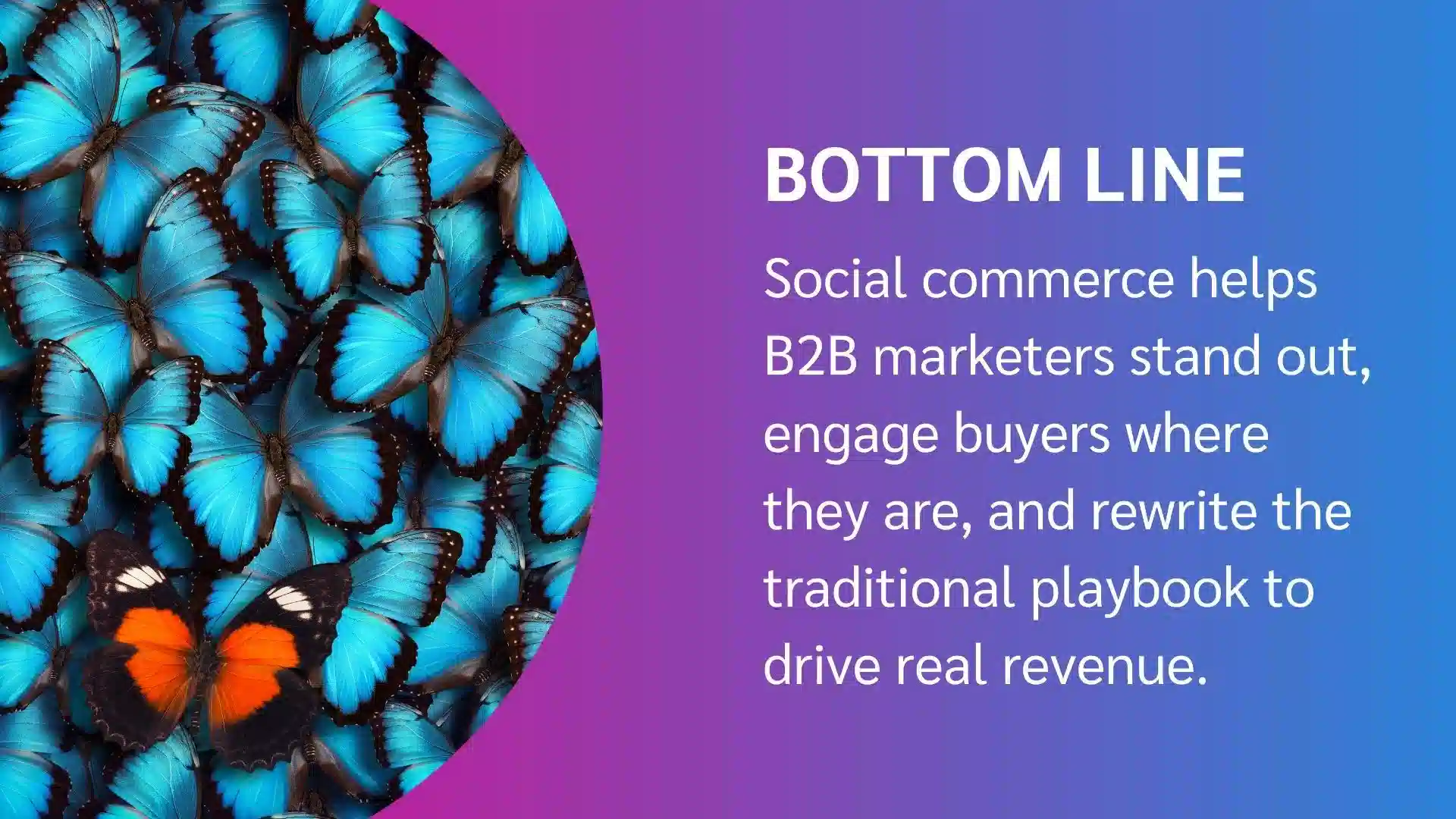
Strategic benefits and challenges of B2B social commerce
B2B social commerce brings a fresh edge to traditional marketing. By combining the power of social platforms with partnership-driven strategies, brands can build credibility, accelerate the buyer journey, and drive measurable demand.
But like any evolving performance marketing channel, it comes with its own set of pros and cons.
Benefits of B2B social commerce
Brands that invest in B2B social commerce can gain certain strategic advantages in an increasingly trust-driven market, such as:
- Positioning your brand as an industry expert. High-value content and trusted partner endorsements establishes your brand as a go-to source of insight and solutions.
- Building trust at scale. Peer testimonials, creator reviews, and expert opinions carry more weight with buyers than branded content alone.
- Shortening the sales cycle. Answering real-time questions and removing friction during the purchase process converts leads faster.
- Keeping your brand relevant. Engaging decision-makers where they spend their time—whether on LinkedIn, YouTube, or in niche communities—lets you connect before the pitch.
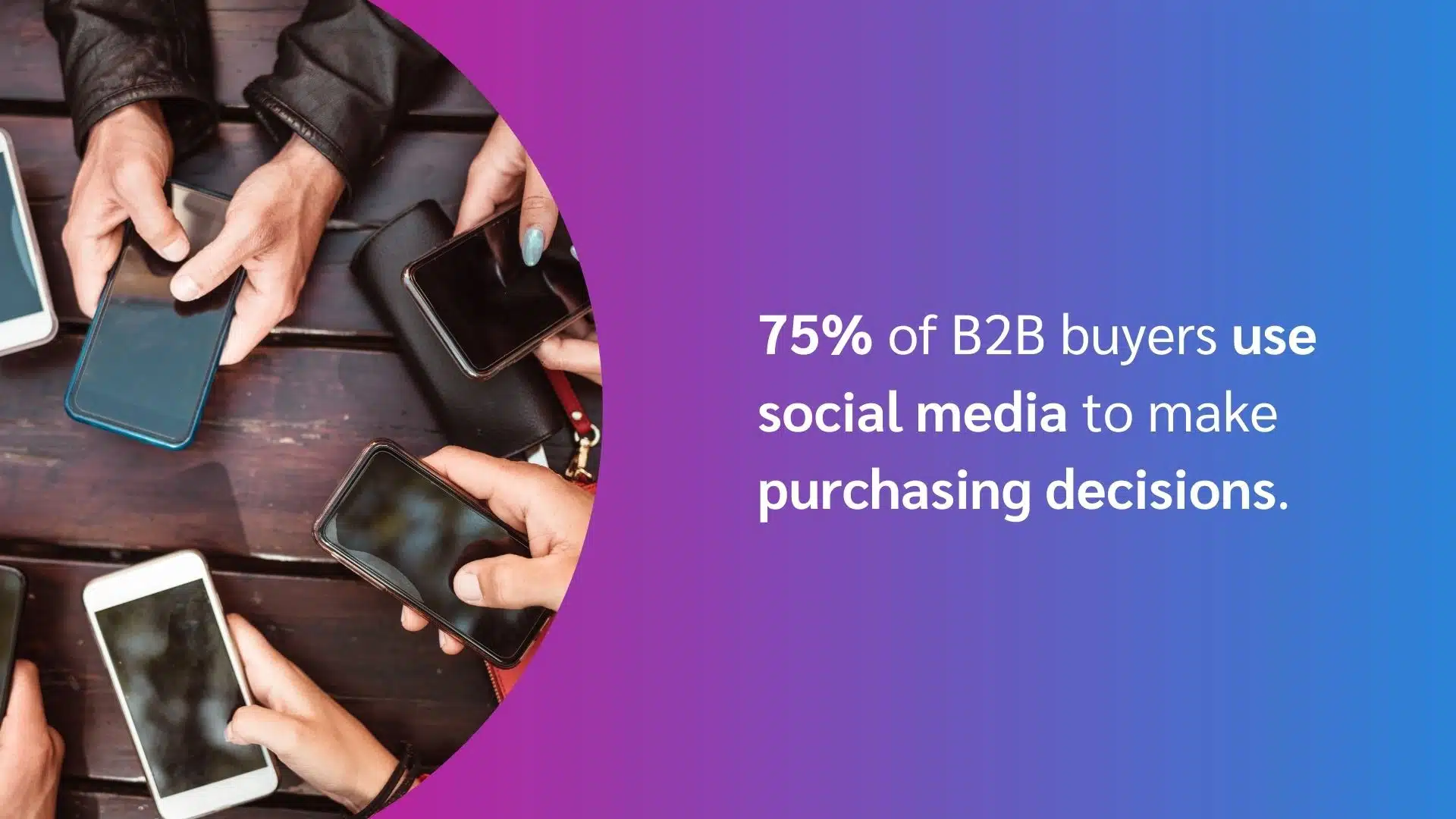
Source: LinkedIn
Challenges of B2B social commerce
While the benefits are significant, brands must also navigate several strategic challenges unique to the B2B landscape, including:
- Navigating a new playbook. B2C tactics don’t always translate to B2B. Brands need strategies tailored to longer sales cycles, multiple decision-makers, and complex buyer journeys.
- Measuring difficulties. Without centralized tools or clear attribution models, proving ROI across channels and partners can be a challenge.
- Increased complexity. Aligning social content with sales and lead-nurturing workflows requires coordination across teams and tools.
- More compliance oversight. Partner-led campaigns must remain aligned with brand guidelines, messaging, and legal requirements, which can often add time to the execution process.

Source: Gartner
5 B2B social commerce strategies you can employ (with examples)
There’s no one-size-fits-all approach to B2B social commerce. But the most effective strategies put trust front and center. Whether you’re using paid ads, owned content, or direct outreach, partnerships are essential to scaling social impact in a way that feels personal and credible.
Below, we break down five proven strategies to help B2B marketers harness social selling tactics that can turn social media into a demand engine.
Strategy 1. Direct social selling
Direct social selling uses platform-native tools like direct messages to engage decision-makers in real time. It turns cold leads into warm conversations without ever leaving the platform.
Platforms like LinkedIn Sales Navigator make it easy for sales reps to build one-on-one relationships with prospects. Reps can guide potential buyers through the sales funnel by sharing relevant content, offering support, and making personalized product recommendations—all within the social feed.
This mode of selling is effective, with cold outreach via LinkedIn InMail averaging 18-25 percent. However, some basic personalization can boost that to 35-50 percent.
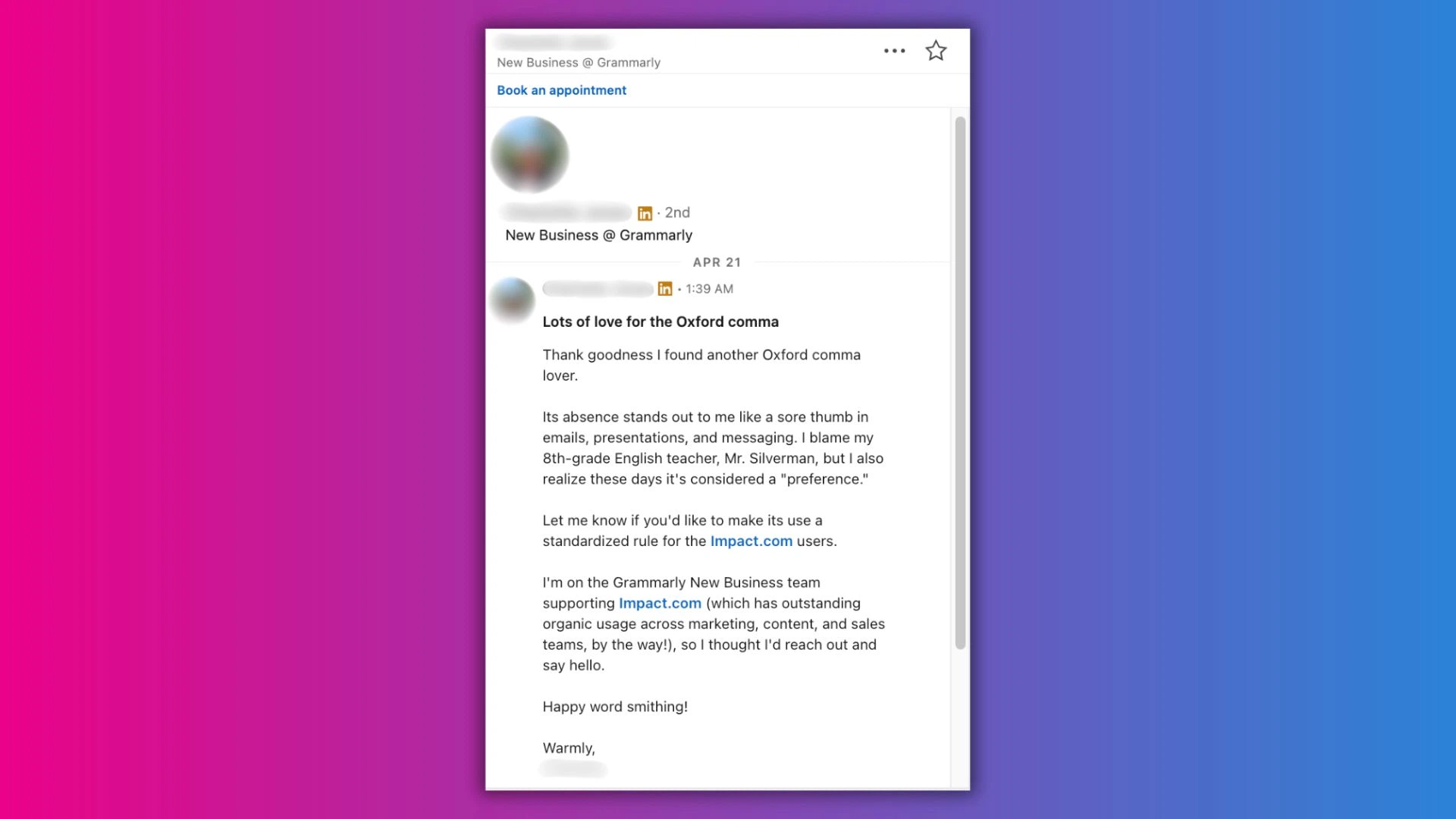
Grammarly’s sales team personalizes its direct outreach on LinkedIn by first building a human connection. In this example, the rep referenced a relevant detail in the prospect’s profile, shared a related story to establish rapport, then pivoted to a conversation about how their product can provide value.
Why direct social selling works
- Highly personalized. Sales reps connect directly with key buyers and tailor the message to their specific needs.
- Full control. Teams control both the outreach and the messaging—no need to rely on algorithms.
- Build relationships. Real conversations build trust and give reps the chance to handle objections or questions in the moment.
- Low lift, high return. Social selling requires minimal infrastructure to get started and can quickly scale with the right training and partner support.
Done right, direct social selling combines human connection with strategic partnerships, creating the kind of buyer experience that converts cold leads into loyal customers.
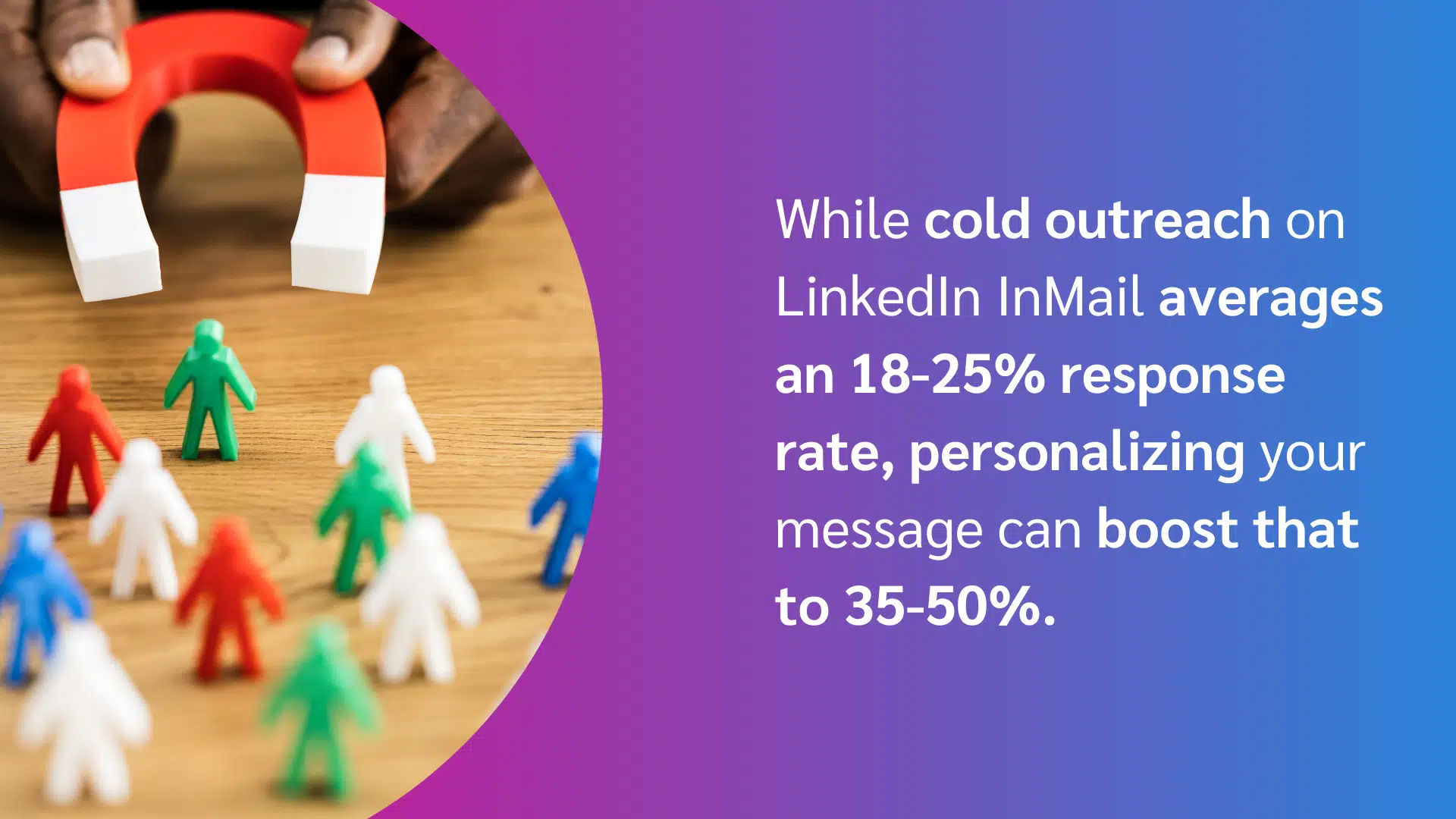
Source: LinkedIn
Strategy 2. Social media advertising with commerce features
Paid social is no longer just about impressions—it’s a performance channel. Social platforms now offer built-in commerce tools that let B2B brands drive conversions and collect leads without sending users off-platform.
High-impact ad formats include:
- Lead generation ads. Auto-fill contact info, reducing friction and boosting form completions.
- Retargeting campaigns. Re-engage site visitors who didn’t convert the first time.
- Testimonial-driven ads. Build trust through customer stories and partner endorsements.
These ad formats can be highly effective compared to standard approaches. For example, LinkedIn’s native lead gen forms has an average conversion rate of 13 percent, driving 5 times higher conversions than standard landing pages.
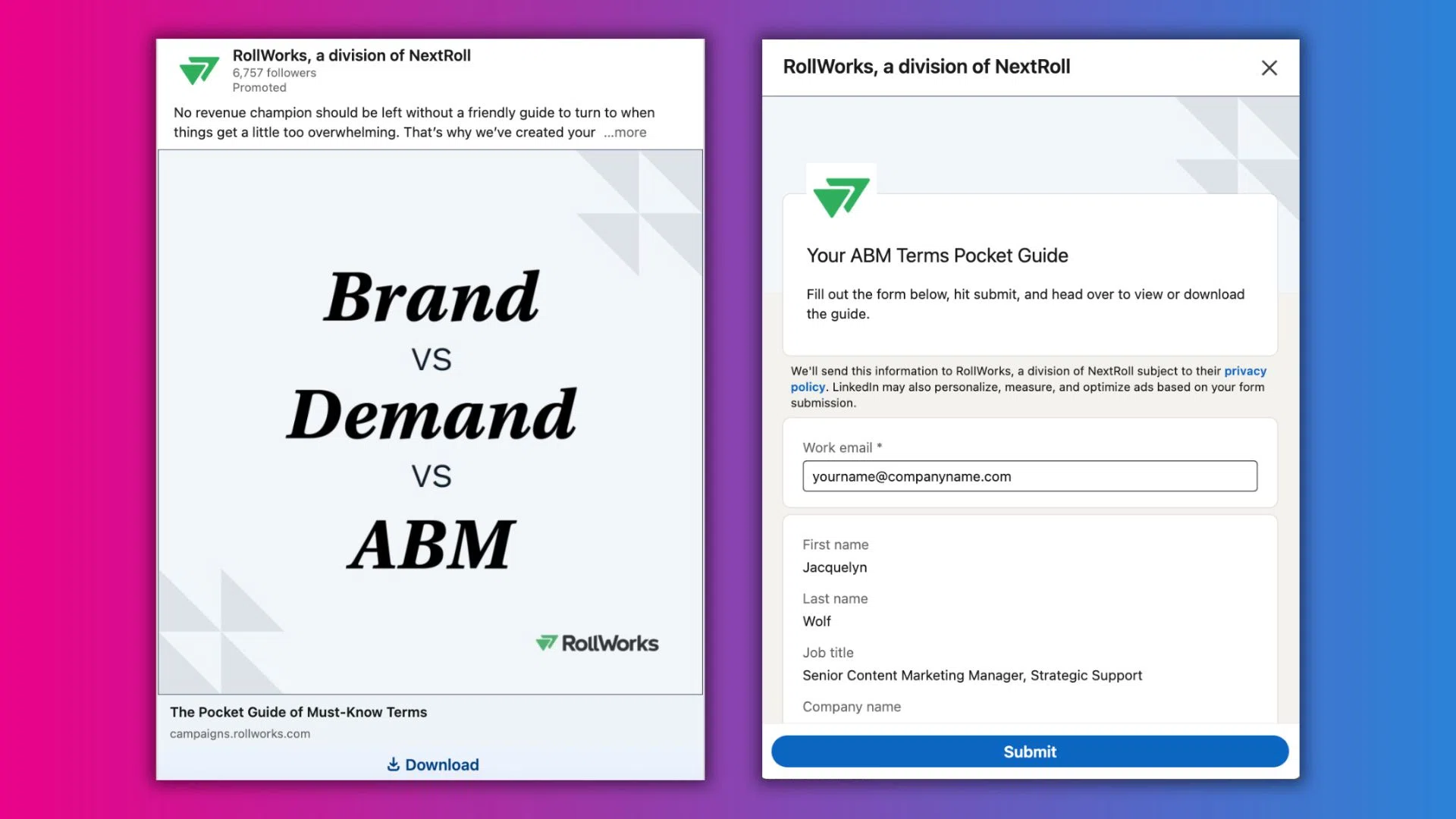
In this LinkedIn’s native lead gen form ad, a prospect clicks to download a whitepaper from B2B marketing platform RollWorks. The lead form auto-populates their name and email using platform data, allowing them to access the content instantly.
Partnerships amplify these results. When you collaborate with creators, brands, or affiliate partners, you add a layer of authenticity to your ads. Trusted voices sharing real value often convert better than branded copy alone—especially considering just 2 percent of people consider traditional ads a credible source.
Take the newsletter builder Beehiiv, for instance. They teamed up with creators who share short-form videos highlighting how Beehiiv solves their real business challenges. These videos are turned into ads, driving warm traffic straight to lead forms or product pages.
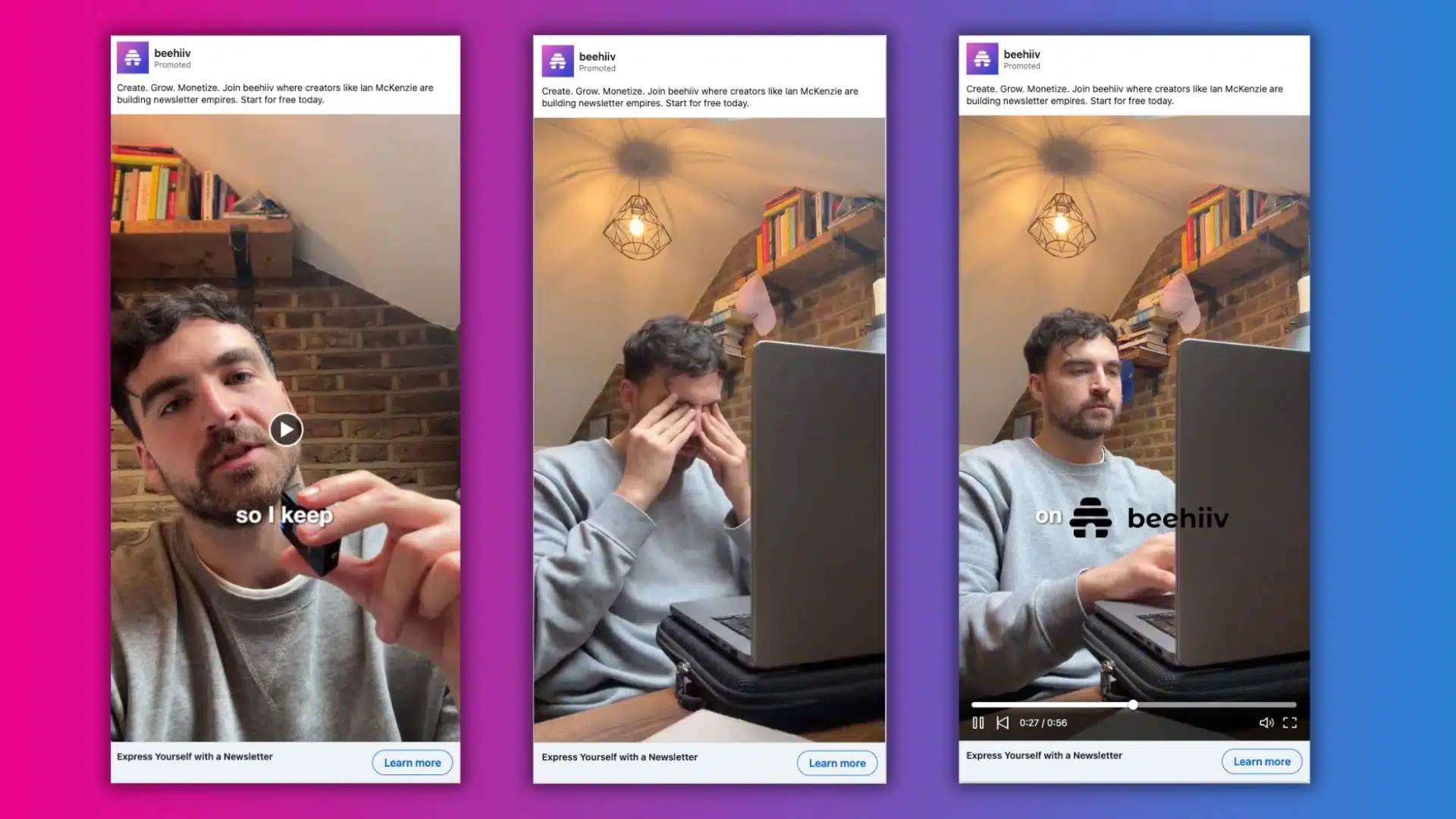
This iteration of Beehiv’s ad series featured an engaging video from LinkedIn creator Ian McKenzie, using his compelling testimonial and built-in trust he has with an audience to drive conversions.
Why social media ads with commerce features work
- Better user experience. On-platform forms create a frictionless experience that reduces drop-off, accelerating the buyer journey.
- Precision targeting. Reach specific job titles, industries, and company sizes with granular ad controls.
- Clear attribution. Built-in analytics help you tie results directly to revenue, making ROI easier to prove.
- Trust at scale. Promoting partner content adds a layer of credibility that branded messaging alone can’t replicate.
Social media advertising gets results, but pairing it with partnerships transforms it into a trust-driven growth engine.
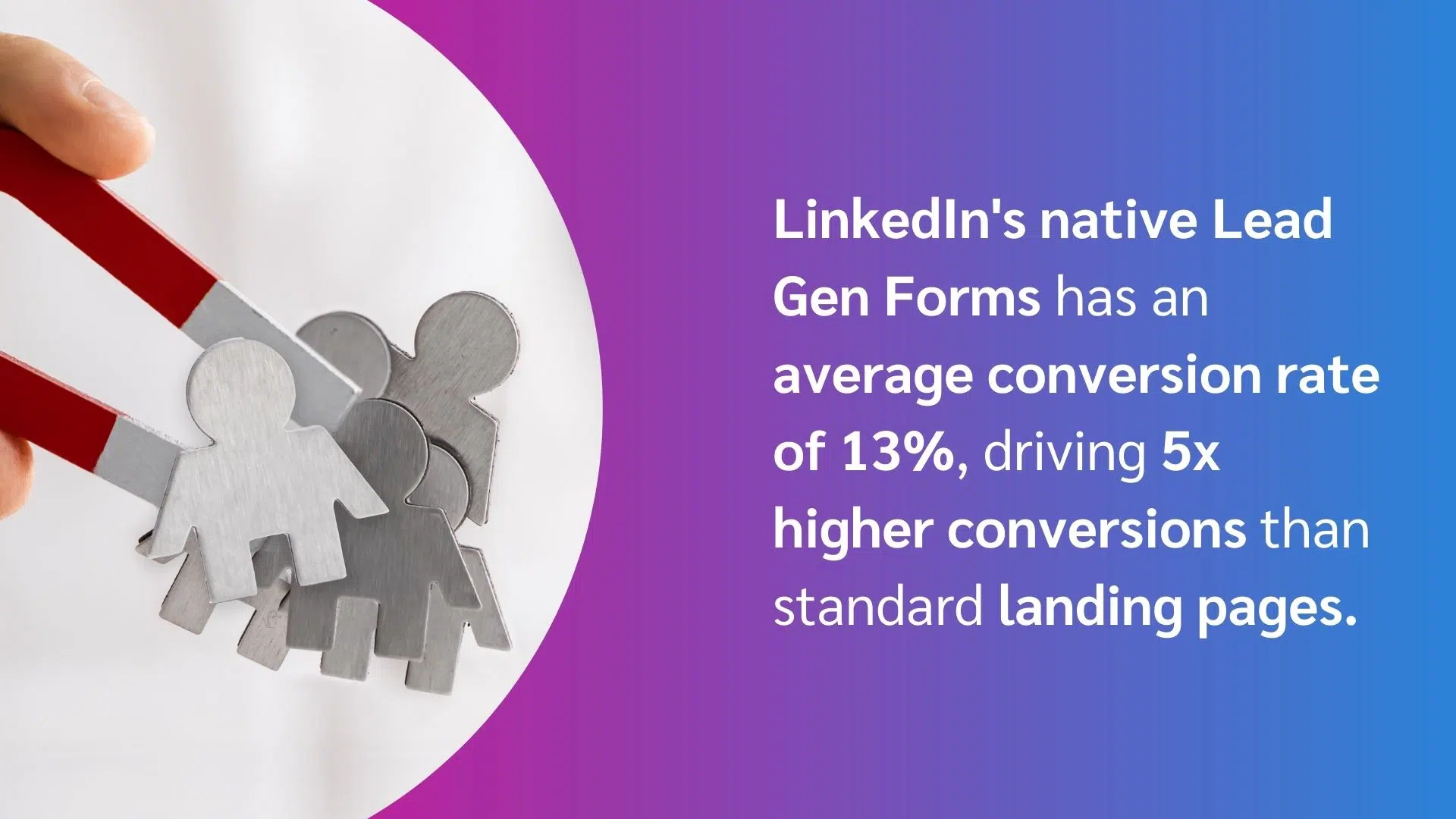
Source: LinkedIn
Strategy 3. Owned-content commerce
Nearly two-thirds of B2B buyers interact with between three and seven content pieces before reaching out to sales, making owned content more important than ever before.
These educational assets—such as whitepapers how-to posts, and podcast episodes—can live or be promoted on your social channels and work double duty: they help prospects learn while also qualifying them as high-intent leads.
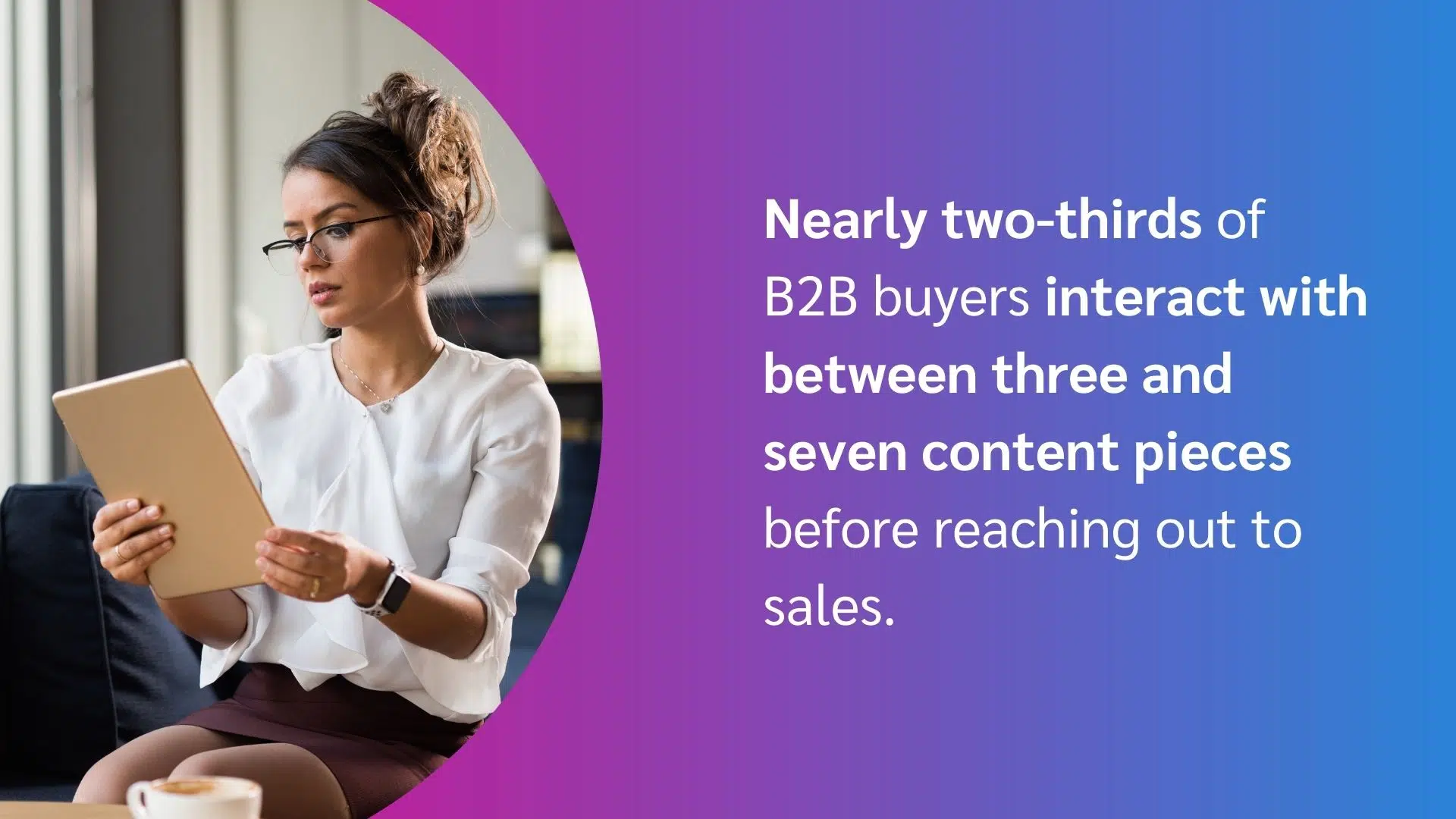
Source: Demand Gen Report
When done right, owned content keeps your brand top-of-mind throughout the buying journey by providing value at every stage.
Take ShyftOff. This gig-powered staffing platform for contact centers partnered with endpoint security software ThinScale to co-host a webinar about how they make gig-based work more secure.
Attendees signed up with their email to access real-world insights and expert-led discussions. In return, the sales team walked away with a list of high-intent leads.

ShyftOff used owned content in collaboration with brand partner ThinScale to enhance its effectiveness.
Incorporating partners into these kinds of owned-content campaigns can amplify its impact. In this example, ThinScale added authority to a topic of concern for ShyftOff’s potential prospects. However, this strategy can easily translate to other types of partners, such as thought leaders and influencers within your industry.
This added layer of social proof can potentially drive up registrations, engagement, and conversions.
Why owned content works
Implementing an owned-content commerce strategy—with or without partners—sets B2B brands up to:
- Establish authority. Delivering useful, educational content positions your brand as a go-to expert in your space.
- Control your message. Unlike third-party channels, owned content lets you shape and protect your brand narrative.
- Generate qualified leads. Gated content helps capture contact info from users actively researching a solution like yours, generating triple the leads than traditional outbound marketing.
- Shorten the sales cycle. Addressing common questions up front builds buyer confidence and accelerates decision-making.
Owned content drives discoverability, supports partnerships, and turns education into conversion—all while keeping your brand front and center.
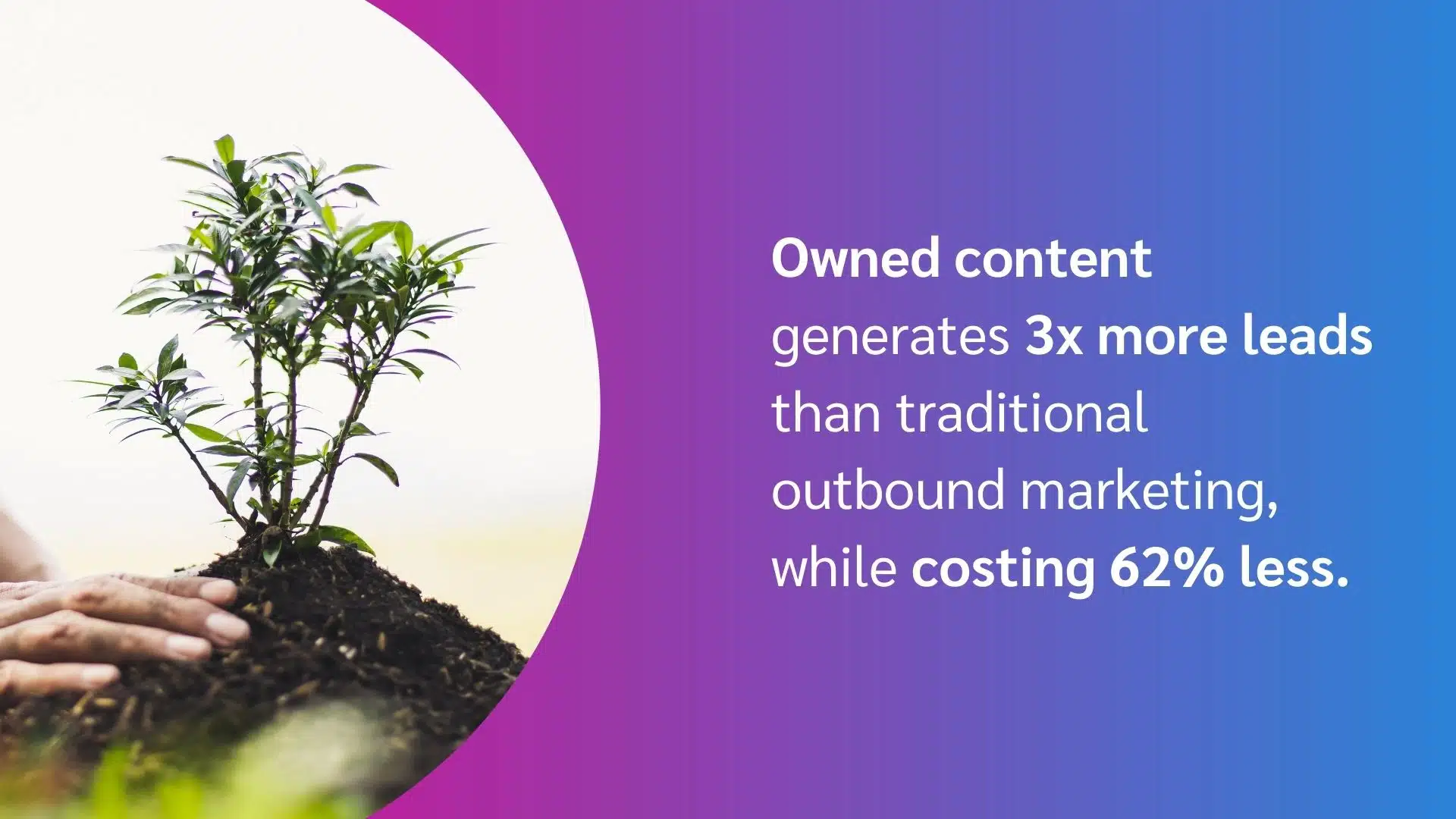
Source: Demand Metric
Strategy 4. Partnership-powered commerce
Almost one in five B2B buyers agrees that social media recommendations from industry influencers would increase their likelihood of buying a product online. That makes who delivers your message just as important as what you’re saying.
Partnering with creators, affiliates, or industry experts who already have your audience’s trust helps drive warm, high-intent traffic. This approach—often called partnership-powered commerce—consistently outperforms traditional advertising. Research shows it can drive 2–3x more sales than paid ads.
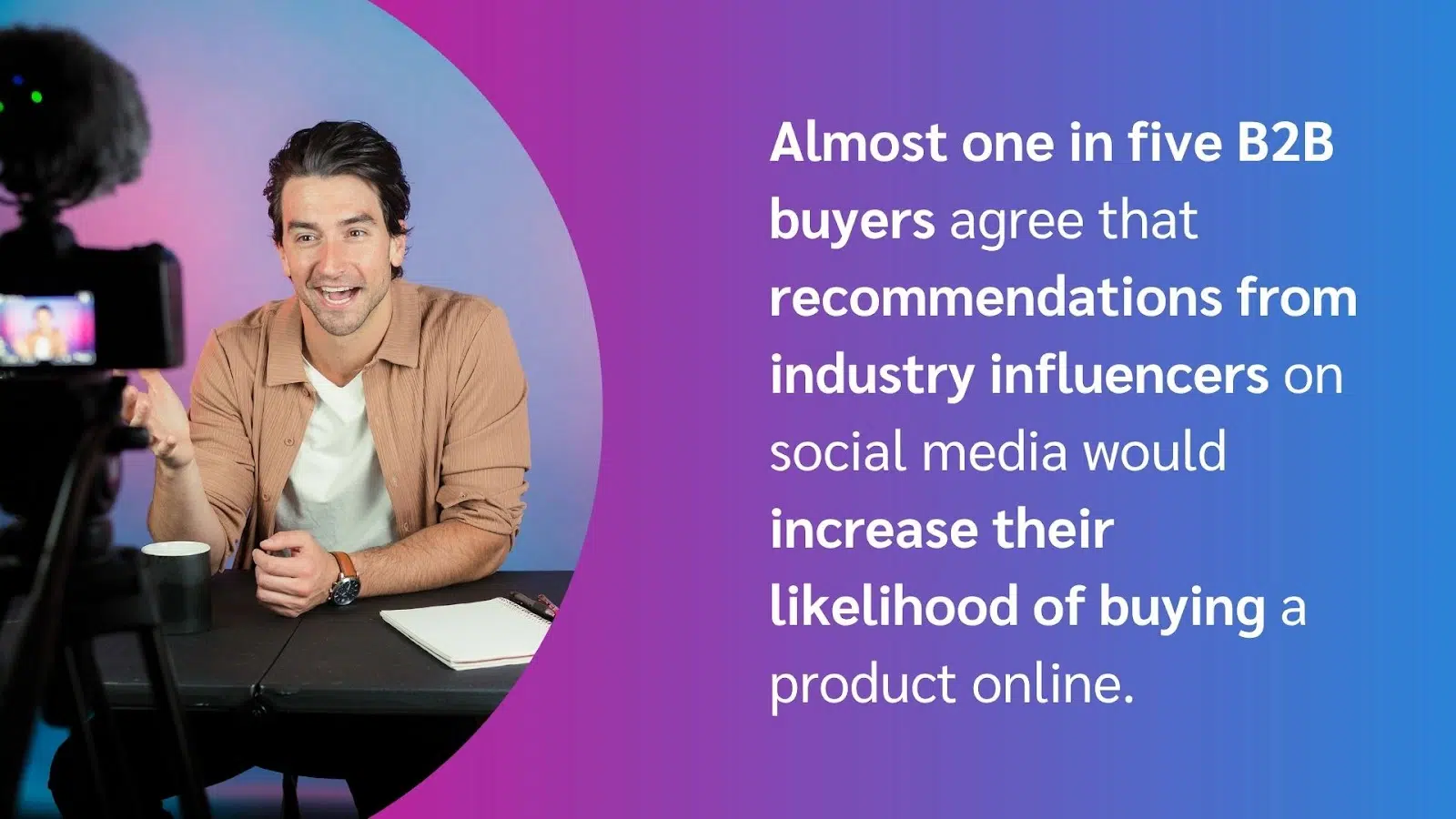
Partnership content in the B2B space often mirrors what you’d expect in B2C marketing. It can take many forms, but it always centers on using a trusted voice to deliver a message:
- The most common approach is affiliate marketing, where partners publish in-depth reviews or how-to videos and embed unique affiliate links or promo codes to track demo requests or sales
- Brands can also use sponsored content, paying a flat fee for a creator or publisher to feature their product in a dedicated LinkedIn post or a popular industry publication
- Another powerful tactic involves activating existing customers in user-generated content (UGC) campaigns, encouraging them to share their own success stories or use cases, which provides invaluable social proof
- Brands can also incentivize customers to refer new business through referral programs, offering rewards for successful leads or conversions
Take Motion, a productivity app. The brand partnered with software review publisher Efficient App to reach a wider audience and boost demand. Efficient App shared a detailed evaluation of the app on their blog and YouTube channel, including affiliate links.
These links lead viewers to Motion’s demo request page, giving users a quicker path to purchase while providing the brand a clear view of how many qualified leads the publisher drove.
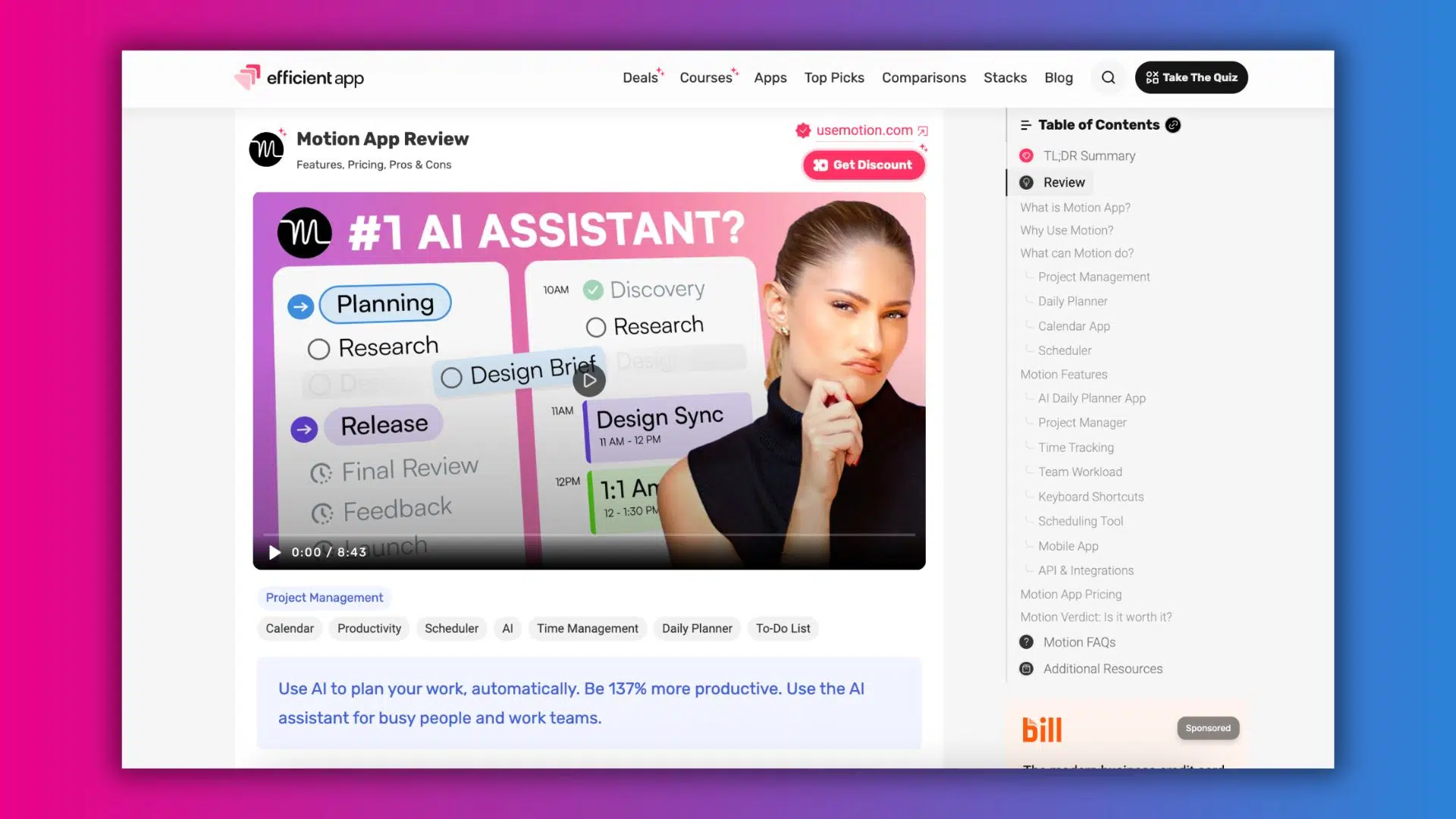
Efficient App’s review of Motion attracts high-intent audiences and encourages them to book demos, helping Motion generate more leads and grow their customer base.
Why partnerships work
The advantages of a partner-powered approach are clear:
- Stronger brand authority. Partner voices reinforce your expertise and credibility across trusted channels.
- Performance-based ROI. Affiliate links make it easy to measure impact—you only pay when results are delivered.
- Unified brand narrative. Partners help you amplify your message consistently across multiple touchpoints.
- Sustainable content pipeline. Referral campaigns generate an ongoing stream of tailored, targeted content that maps directly to audience needs.
When you use expert-led content to boost your message and reach new audiences, partnership-powered commerce becomes a powerful strategy for building trust, driving conversions, and scaling impact.
Strategy 5. Community-based commerce
Brand-led communities are no longer a “nice to have”—they’re a powerful growth driver. When done well, they build awareness, generate qualified leads, and support conversion efforts.
Whether it’s a Slack group, LinkedIn community, or hosted forum, these spaces drive customer advocacy, create upsell opportunities, and reinforce your brand’s credibility. With thoughtful community management, they evolve into professional hubs where users share best practices, ask questions, and recommend tools—creating an organic path to revenue.
Take Monday.com, for example. Their active user forum connects power users who trade insights on advanced features, which boosts adoption and upgrades. They also co-host webinars with partners, sending high-intent traffic directly to other brands in their ecosystem.
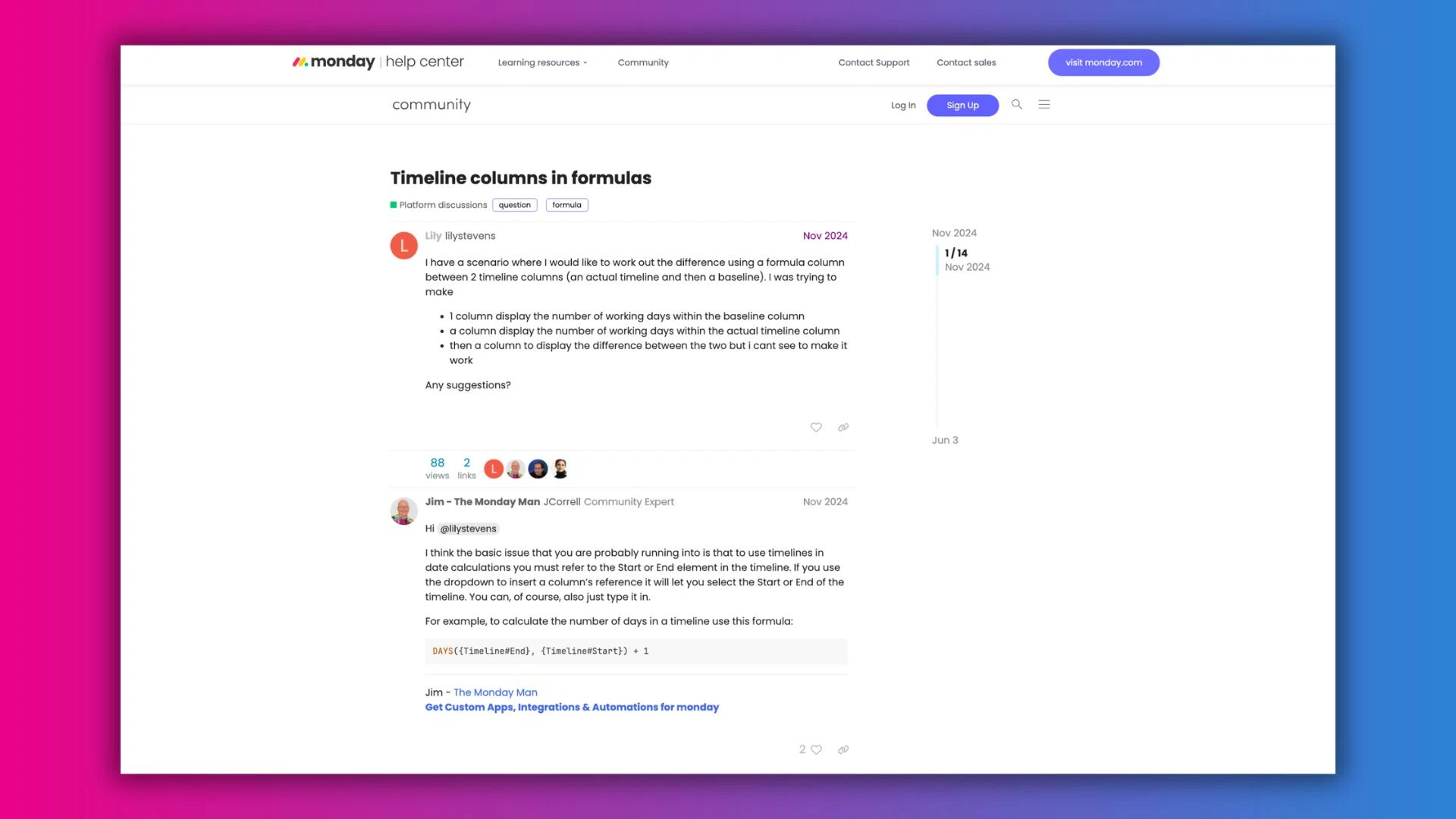
A simple Q&A thread like this does more than solve one user’s problem—it becomes a permanent, searchable resource. For potential customers, finding these solutions builds confidence and removes friction from the buying journey.
Why community-based commerce works
A strong brand community strategy delivers measurable value across the funnel:
- Brand champions. Loyal users provide peer support, troubleshoot issues, and advocate on your behalf—no paid media required.
- Distributed reach. Brand ambassadors can embed naturally in community spaces, sharing affiliate links and insights in authentic ways.
- Authentic social proof. A steady stream of user-generated content and reviews boosts trust and conversion rates.
- Stronger adoption. Deep community engagement encourages more robust product usage, which can lead to upsells.
- Customer loyalty. Peer-to-peer support strengthens customer relationships and reduces reliance on support teams.
5 steps to create and execute your B2B social commerce strategy
With research from Gartner showing that 75 percent of B2B buyers prefer a rep-free buying experience, a traditional approach is no longer enough to win their business.
As more of the B2B buyer’s journey happens on social media, having a clear and effective social commerce strategy is more important than ever.
This five-step framework provides a clear path forward, allowing you to build a program that’s strategic, scalable, and designed to deliver measurable ROI.
1. Establish your strategic foundation and goals
- The goal: Define what success looks like before you start
- Time investment: 1-2 weeks for planning
- Key outcome: Clear objectives, chosen strategies, and allocated resources
Before diving into content or channels, map out your strategy. Defining what success looks like from the start keeps your team focused, aligned, and results-driven.
Set your primary objective
Choose one main goal: Are you trying to shorten the sales cycle? Drive awareness for a new product? Build authority in a crowded space?
Goal-setting marketers are 377% more successful than their peers, so clarity upfront leads to better execution down the line.

Source: CoSchedule
Match strategy to audience behavior
Analyze your target audience’s digital habits to determine which social commerce strategies they’re most likely to engage with. If your buyers are active on LinkedIn but avoid TikTok, focus there first.
Establish measurable KPIs
Tie each tactic to a measurable outcome, such as:
- Leads generated from gated content or demo CTAs
- Community growth and engagement rates
- Referral traffic from partner channels
- Revenue influenced by social commerce efforts
Allocate resources intentionally
Budget and bandwidth are limited—prioritize based on expected impact. If a strategy is new to your team, start small and test before scaling.
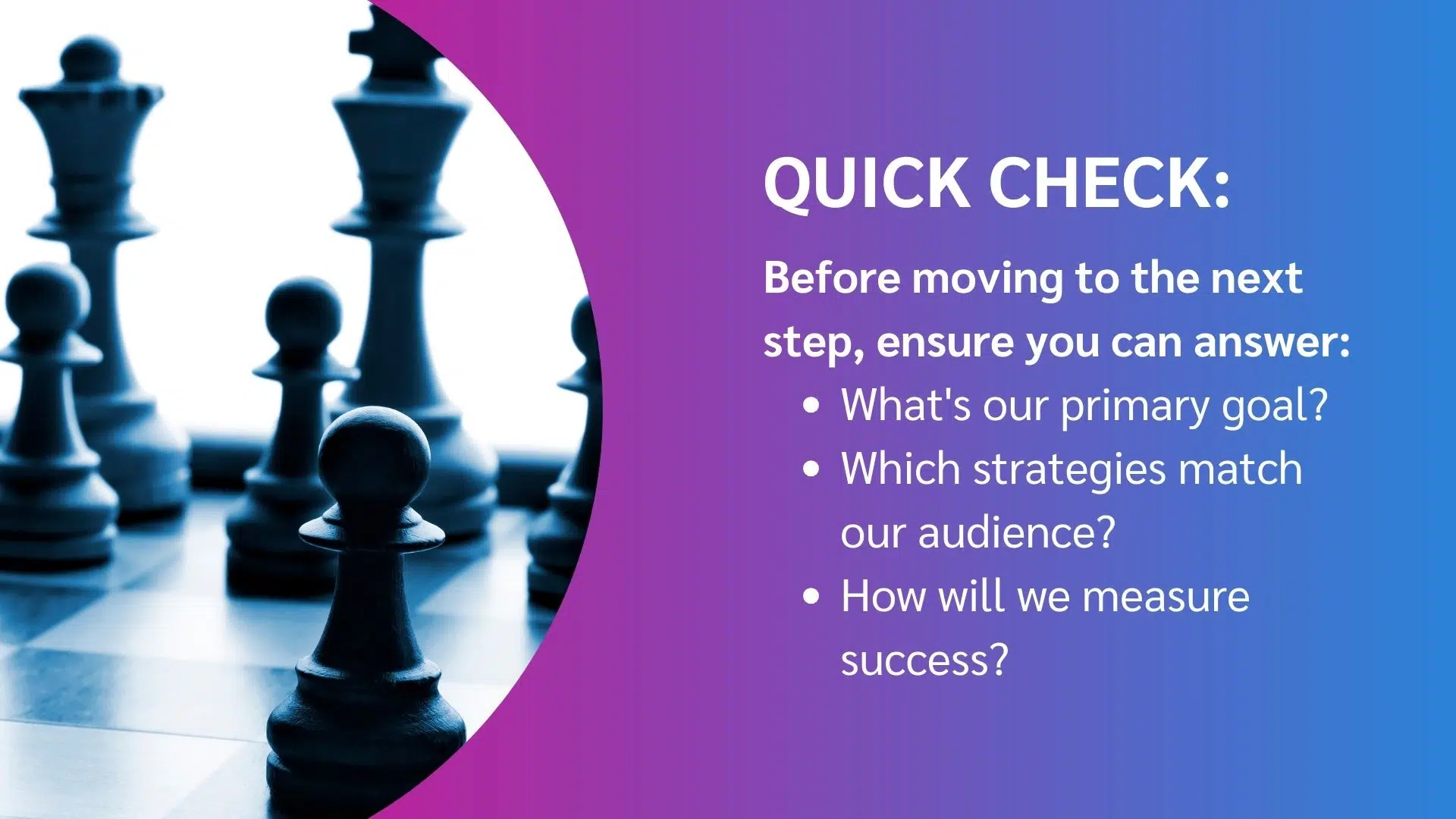
2. Identify the platforms where your audience learns
- The goal: Find the channels and communities where your target audience seeks information and makes buying decisions
- Time investment: 2-4 days for research and analysis
- Key outcome: A prioritized list of high-signal platforms and communities for outreach
To be effective, you need to show up where your buyers are already engaging with content, asking questions, and making purchasing decisions. This often means skipping the broadest platforms in favor of those that foster professional discovery and intent-rich conversations.
Start with your existing data
Use your analytics and CRM reports to determine which channels already drive high-quality leads or conversions.
To pinpoint your most valuable referral sources, filter for attributes like:
- Company size
- Job title
- Industry
Survey your best customers
Conduct a short survey or ask during onboarding where your customers learn about new tools. Their answers will reveal high-signal platforms and communities you may not be tapping into yet.
Explore niche communities
Dig into private groups and forums where industry professionals share insights and product recommendations.
Look for active communities on:
- Slack
- Discord
- Subreddits
- Industry-specific forums
Audit partner and creator influence
If you work with partners, assess where their audiences are most engaged. Analyze their channel demographics and past performance to ensure their influence aligns with your target buyer’s behavior.
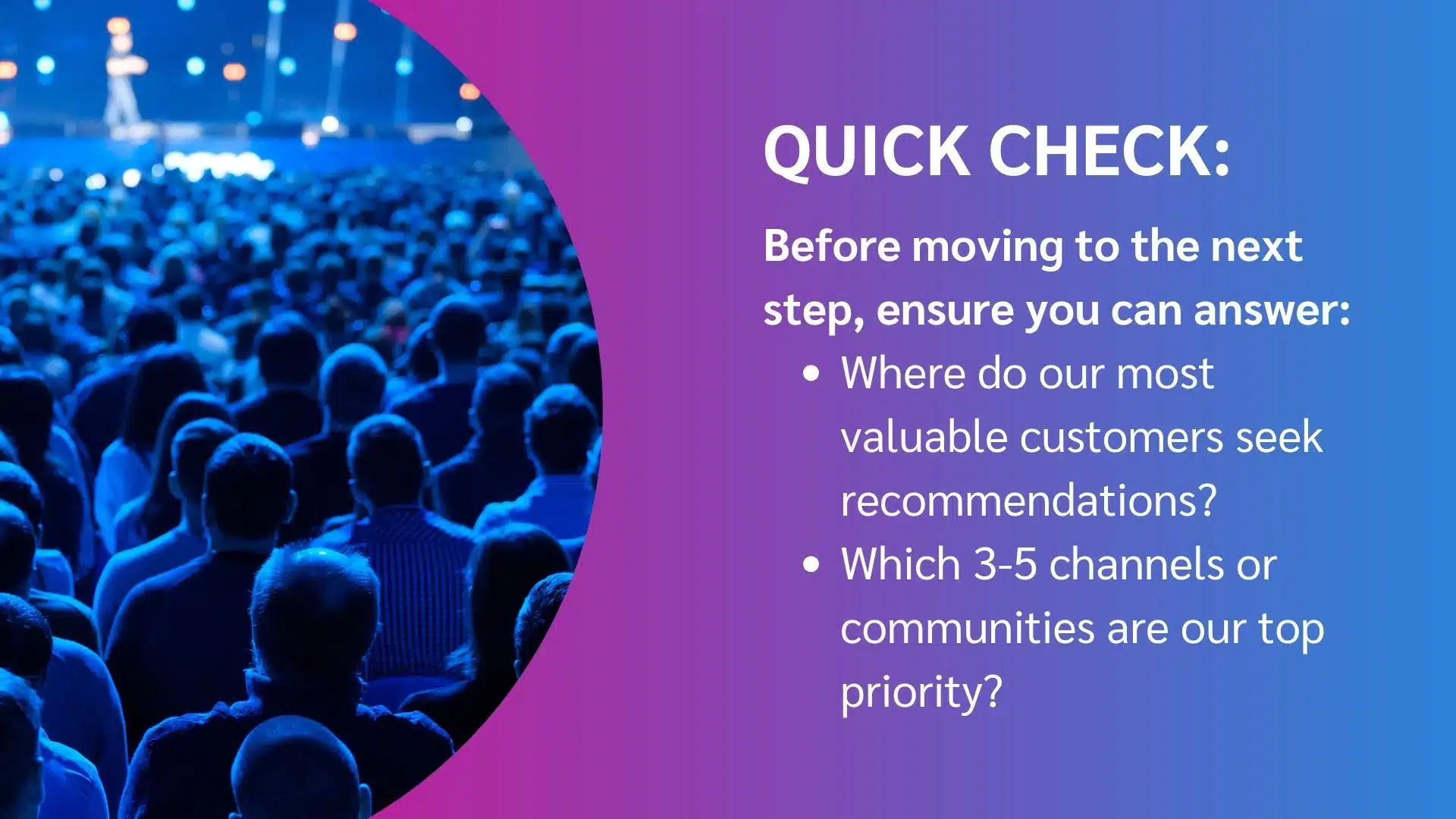
3. Create content that educates, not sells
- The goal: Develop value-led content that addresses audience pain points and builds trust
- Time investment: Ongoing (2-100+ hours per asset, depending on scope)
- Key outcome: A library of educational assets mapped to the buyer’s journey
In B2B, buyers don’t browse social feeds for a sales pitch—they want practical solutions to their business challenges.
By sharing valuable content that answers their questions, you build credibility and guide them through their journey. This is why content forms the foundation of your social commerce efforts.
Lead with solutions, not features
Structure every piece of content around a specific question or challenge your buyer faces.
Positioning your product as the solution to a pain point is far more effective than listing its features. In fact, 88 percent of B2B buyers trust brands more if they receive valuable content from that vendor.
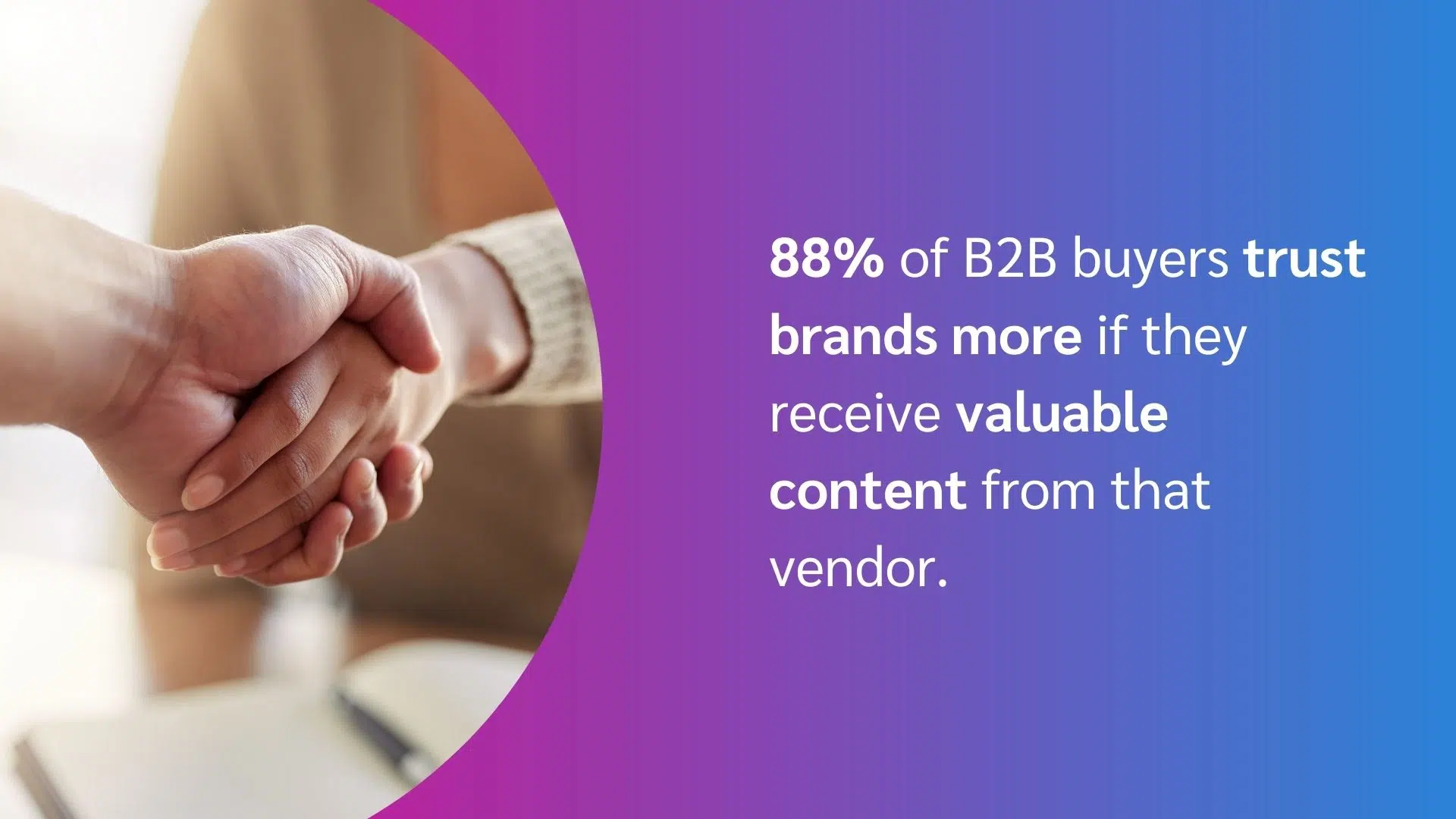
Source: Inbox Insight
Co-create with partners and industry experts
Add credibility and reach a wider audience by inviting carefully selected partners to share their perspectives. Collaborate on assets like:
- Guest posts
- Co-hosted webinars
- Joint research reports
- Short-form interview videos
Create practical, how-to guides
Use video demos, LinkedIn posts, or carousel guides to break down common workflows or problems. Aim to be the go-to resource your buyer refers to and shares with their team.
Map content to the buyer’s journey
Think full-funnel and map each asset to a specific stage. Top-of-funnel content might raise awareness about a problem, while mid-funnel content—like case studies or product comparisons—helps buyers evaluate their options.
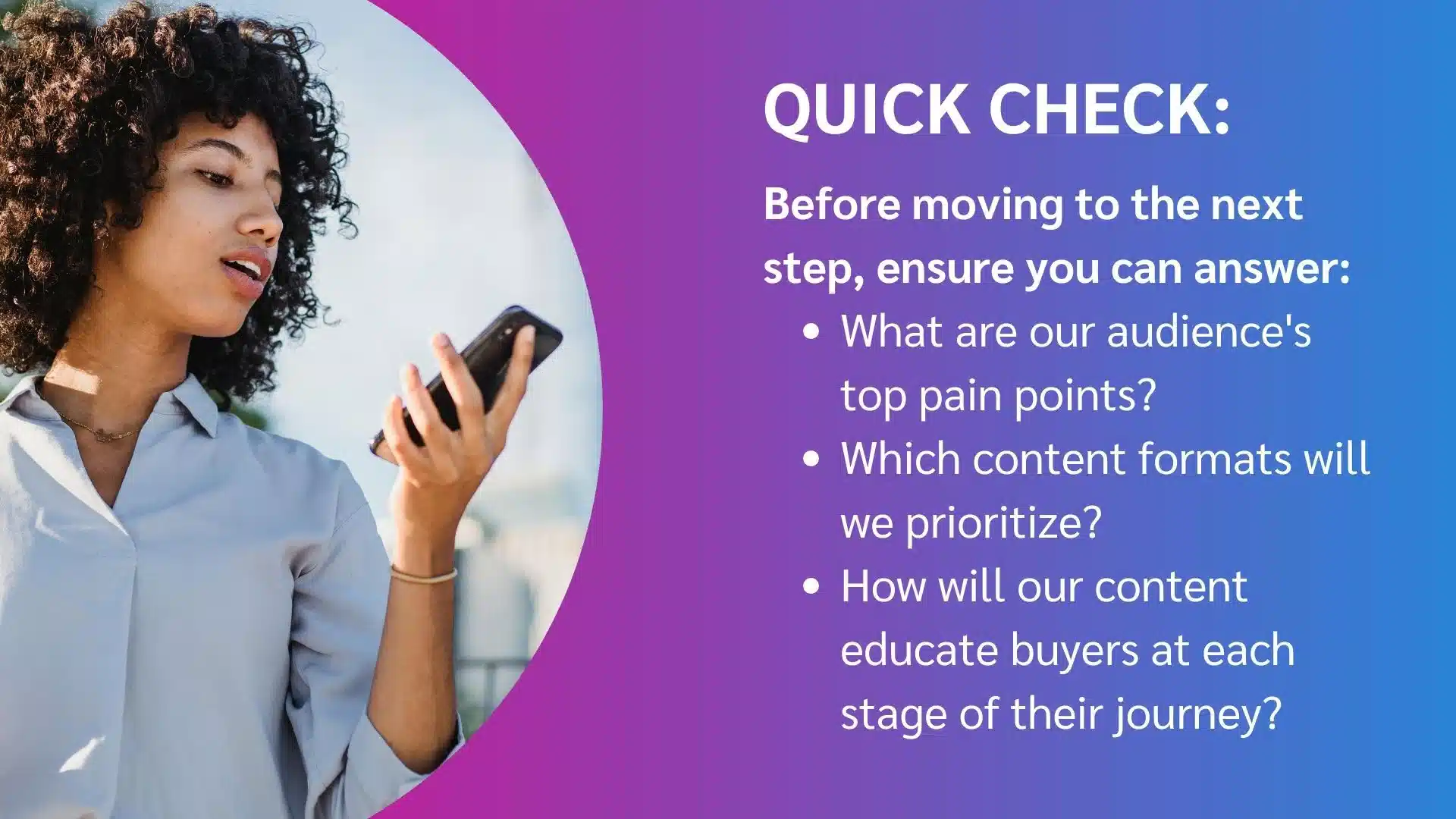
4. Activate and manage your partnerships
- The goal: Build a network of trusted creators, experts, and customers to drive high-intent leads and build brand authority
- Time investment: 1-2 weeks for setup, then ongoing management
- Key outcome: A structured partnership program with a vetted list of initial partners
Partnerships allow you to tap into the credibility that creators, industry experts, and affiliates have already built with your target audience. A partner’s endorsement cuts through the marketing noise, answering the crucial question every B2B buyer has: “Who else trusts this solution?”
Recruit the right partners
Partner with credible B2B-focused creators and industry experts whose voice and audience align with your brand values. Engaged, niche audiences often convert better than broad ones.
Turn loyal customers into advocates
Identify loyal customers who already advocate for your product. These power users can become your most influential and authentic partners when invited into a structured program.
Offer performance-based incentives
Design a compensation model that rewards performance and effort. Tie payouts to high-value actions, such as:
- Demo bookings
- Free trial sign-ups
- Qualified lead referrals
- Closed-won deals
Equip partners for success
Provide trackable links, branded assets, key messaging, and guidelines to help partners promote your brand consistently. A partner portal or centralized dashboard makes management easier as you scale.
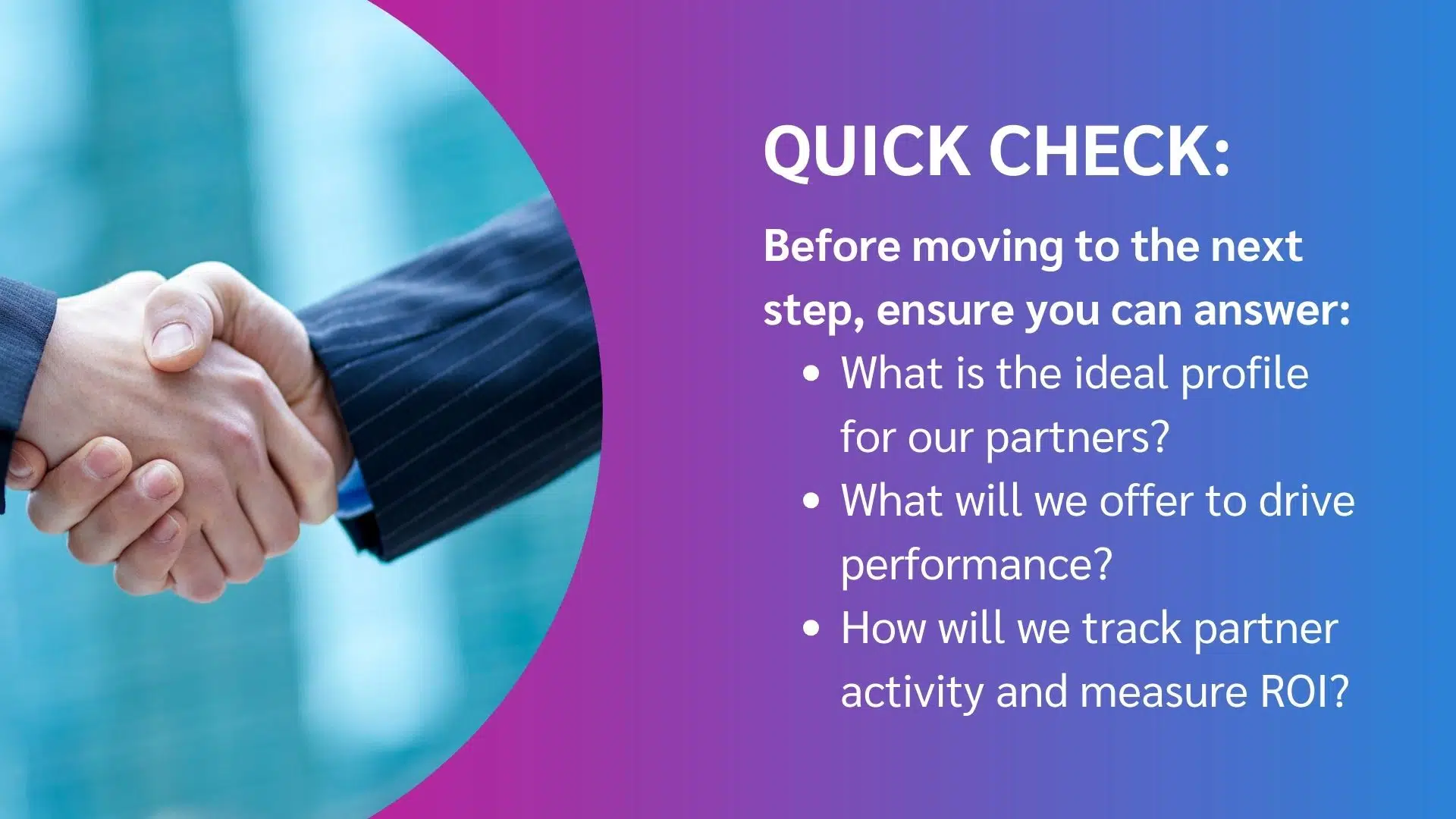
5. Use a unified platform to manage and measure your impact
- The goal: Centralize social commerce activities into a single system to streamline workflows and accurately attribute ROI
- Time investment: 2 weeks-2 months for platform implementation, depending on program scope
- Key outcome: A fully integrated technology platform for managing campaigns, partners, and reporting
To scale your efforts, you need visibility. When your paid social campaigns, partner referrals, and content downloads live in separate systems, attributing value becomes a guessing game.
A unified platform brings all the moving parts together, helping you manage workflows, automate operations, and prove your impact.
Consolidate your tech stack
Instead of stitching together multiple point solutions, select a single tool that supports your end-to-end needs—from partnership automation and social campaign integration to content performance tracking.
Centralize partner workflows
Manage partner discovery, recruitment, contracts, and communications in one place. A streamlined process helps you scale your program without losing momentum.
Automate commissions and payouts
Avoid manual tracking by setting up performance-based commission rules that trigger payouts automatically. This promotes accuracy and builds trust with your partners by ensuring fair, timely rewards.
Implement end-to-end attribution
Use UTM parameters, CRM integrations, and conversion tracking to follow every touchpoint across all social media channels. This is critical for understanding the full customer journey.
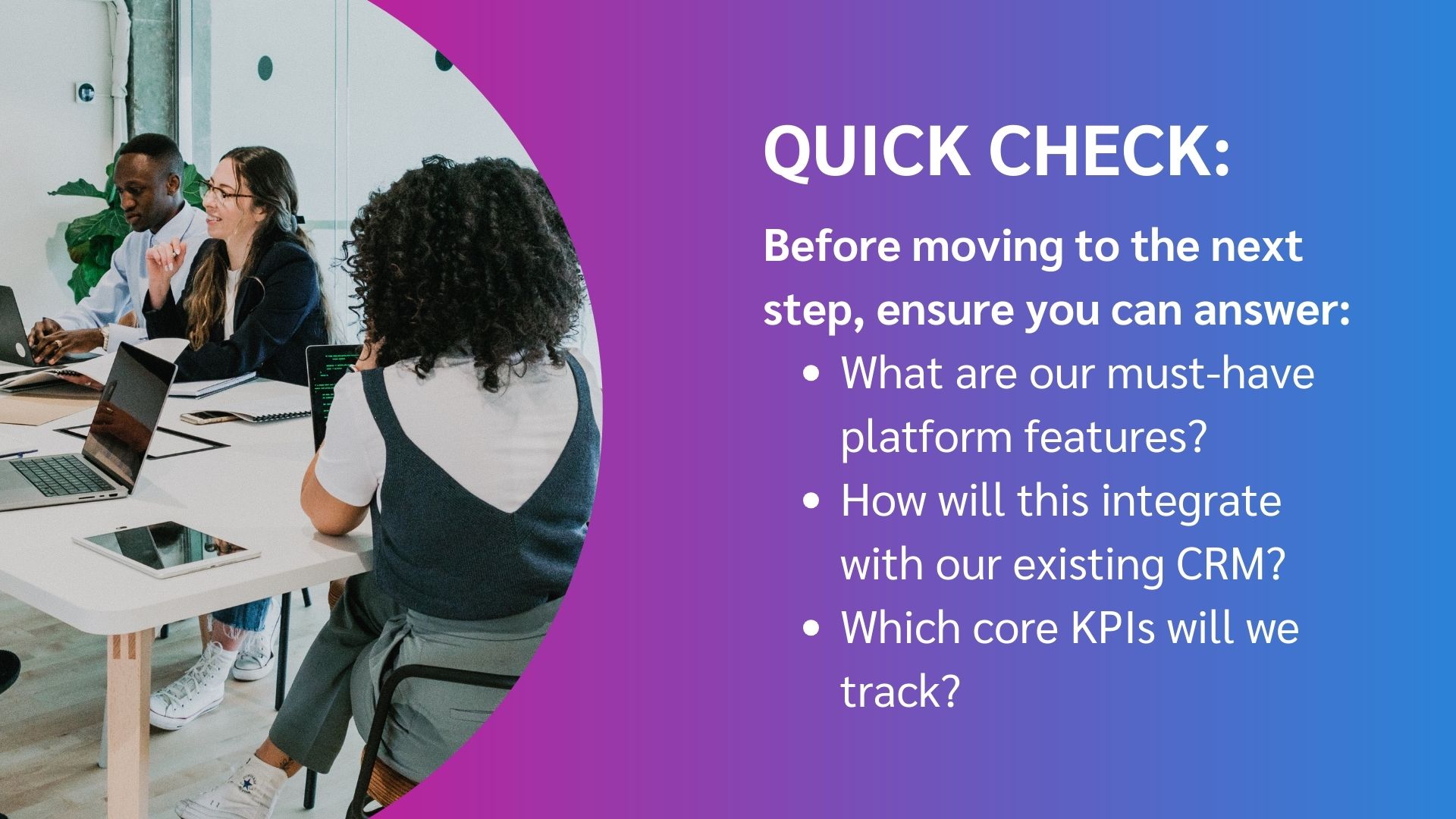
The future of B2B growth is social-first
B2B buying has changed, and it’s rarely a solitary decision. Today’s buyers lean on social proof, peer recommendations, and expert content to evaluate vendors long before they ever fill out a form.
This shift in buying behaviors makes B2B social commerce one of the most powerful growth strategies for 2025 and beyond. Within that strategy, partnerships are the key to scaling your efforts and creating deeper customer relationships. You must meet decision-makers in the moments that matter and on the platforms they trust most.
For B2B marketers, now is the time to move beyond the traditional funnel and embrace social commerce as a core driver of demand, authority, and long-term growth.
Want to learn more about B2B marketing strategies you can use to grow your business? Check out these resources:
- How to build a successful B2B affiliate marketing campaign (blog)
- The B2B guide to building a high-performance content operation (blog)
- Why you need a multi-object B2B referral program (blog)
- Demystifying B2B Partnerships with Adam Glazer, President of Partner Commerce (podcast)
FAQs
B2B social commerce enhances sales by building trust earlier in the buyer journey and reducing friction along the path to conversion. It uses value-led content, peer recommendations, and partner endorsements to influence decision-makers in the channels they already trust—like LinkedIn, YouTube, and niche communities.
By meeting buyers where they learn and incorporating credible voices through partnerships, B2B brands can spark more qualified interest, accelerate deal cycles, and drive higher close rates.
B2B brands can leverage social commerce by showing up where buyers already engage. Businesses use social platforms to share educational content, partner with trusted voices in the industry, and drive high-intent actions like demo requests or content downloads.
With the right strategy and tracking in place, brands can use B2B social commerce to create a scalable engine for building trust, generating leads, and driving revenue.
LinkedIn is a strong channel for B2B social commerce, but it’s just one piece of the puzzle. High-intent buyers are also learning from YouTube tutorials, engaging in Slack communities, and following expert newsletters. The most effective strategies show up across the full digital landscape—wherever decision-makers seek insights and make buying decisions.
Top trends in B2B social commerce include partnership-powered content, creator-led education, and gated assets shared across social platforms. Brands are leaning into niche communities, using AI for personalized outreach, and focusing on performance-based campaigns with clear ROI tracking.
You can measure your B2B social commerce efforts by tracking what matters: engagement, lead quality, conversion rates, and influence on revenue. Then connect the dots. A unified platform helps you attribute impact across every touchpoint—whether it’s a partner referral, gated asset, or paid social ad—so you can see what’s really driving conversions.








